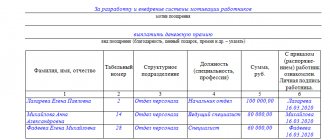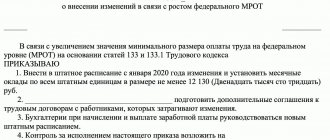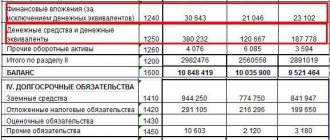In which regions is the regional coefficient applied?
Regional coefficient is a special coefficient that increases the salaries of employees in certain regions of the country (Article 316 of the Labor Code of the Russian Federation). The leadership of the constituent entities of the Russian Federation and municipalities has the right to increase its value by paying the difference from their own budget. The regional coefficient is calculated on the salary regardless of the person’s total length of service and length of service in the region where the coefficient applies. This is the difference between the regional coefficient and the northern surcharge.
The specificity and inaccessibility of the region directly affects the amount of the increasing coefficient applied to wages (Article 315 of the Labor Code of the Russian Federation). You can see the list of areas with unfavorable natural conditions in 2020, in which the regional coefficient is applied, here. The criteria for assessing terrain and the coefficients assigned to them are established by Resolution of the USSR Council of Ministers of November 10, 1967 No. 1029.
The rules for applying northern coefficients are established by the Government. In practice, higher coefficient sizes may be used. In any case, employers' costs for payment are taken into account in labor costs.
What is it needed for?
It is impossible to do without the coefficient; it shows the average number of days in a month and is needed for the correct calculation of the amount of average daily earnings for vacation pay and compensation, as well as for the correct calculation of days in an incomplete working period.
The period for calculating average earnings is the year before the month of going on vacation (clause 4 of the Regulations).
Only days of performance of labor functions are taken into account, even if the employee went to work on red days in the calendar or holidays.
Work experience does not include days of treatment, past vacations, business trips, days off, etc. (clause 5 of the Regulations).
In 2020, for each full month of work, the established coefficient is taken - 29.3.
If the work was not carried out for the entire monthly period, then another norm is applied (clause 10 of the Regulations), a calculation is made taking into account the calendar days worked and the total days of the period, followed by multiplication by the average number of days. Explanations are given below using examples.
The basis for calculating the entire amount due when applying for vacation pay includes all labor charges and bonuses. Certificates of incapacity for work, business trips, and financial assistance are not taken into account.
Application during full period of work
If the entire base period was devoted to work, and all months of the billing period were worked in full, then you should look at paragraph 10 of the Regulations and substitute the values into the given formula to calculate the average salary per day for vacation pay, taking into account the current coefficient 29.3.
Formula:
SDZ = Amount of payments / (12 months x 29.3)
A month is considered fully worked if it did not include:
- sick leave;
- business trips;
- vacations of any type;
- absence and withdrawal.
That is, in this case it is considered that in each of the 12 months of the billing period the person worked 29.3 days.
The total number of days actually worked for a fully worked year = 12 months. * 29.3 = 351.6
How to calculate if the month is incomplete?
Coefficient 29.3 is also necessary when calculating average earnings for vacation pay in cases where the employee has not worked out the entire pay period. In this case, the actual operating time is calculated in calendar days, taking into account the coefficient of the average monthly number of days.
If the base period has not been fully worked out (that is, there are monthly periods that have not been fully worked out), or there are days that are not taken into account, then you should be guided by the following formulas (clause 10 of the Regulations):
Formula:
SDZ = Amount of payments / (29.3 x Number of full months + Days in partial months).
To determine the average salary for vacation pay, you need to know the number of days worked in partial months; for this, the following calculation is used:
Formula:
Days in an incomplete month = Number of calendar days worked x 29.3 / Total number of calendar days in the month.
Vacation pay should be calculated as follows:
Formula:
Vacation pay = SDZ x Vacation days.
Calculation example
Example conditions:
- It is planned to provide rest days from 07/01/2018 for 28 calendar days.
- The period for calculation is from 07/01/2017 to 06/30/2018.
- Monthly salary – 30,000 rubles.
- There is a certificate of incapacity for work - from 03/10/2018 to 03/18/2018.
- Salary in March - 20,000 rubles.
Calculation of vacation pay using coefficient 29.3:
- The amount of total payments (which are taken into account) = 350,000 (30,000 x 11 + 20,000).
- Complete days = 322.30 (29.3 x 11).
- Partial days = 20.79 (22 x 29.3 / 31).
- Average earnings for 1 day = 1020.14 (350,000 rubles / (322.30 + 20.79).
- Average earnings (total) = 28,563.92 rubles (1,020.14 x 28)
Please note: What to do if a regional coefficient is established in the region, how to take it into account in vacation pay?
Is the regional coefficient for vacation pay calculated or not?
From June 1, 2020, he goes on annual leave for 28 days, how to calculate his vacation pay, is it necessary to calculate the regional coefficient?
Let’s assume that every month of the last year has been worked in full, the monthly salary is the same and equal to the salary.
Calculation:
Depending on the region of the Ural region, the increasing coefficient can be equal to:
- 15 – Kurgan, Sverdlovsk, Orenburg, Chelyabinsk regions;
- 20 – Garinsky, Taborinsky, Krasnovishersky, Gainsky, Cherdynsky districts.
For the city of Chelyabinsk the coefficient is 1.15.
Should such regional indicators be taken into account when calculating vacation pay?
Didn't find the answer to your question in the article?
Get instructions on how to solve your specific problem. Call now:
here and get an answer in 5 minutes
It's fast and free!
The billing period has not been fully worked out
During the billing period, the employee could, for example, be on vacation at his own expense. This time is excluded from the billing period (clause 5 of the Regulations on the specifics of the procedure for calculating average wages, approved by Decree of the Government of the Russian Federation of December 24, 2007 No. 922, hereinafter referred to as Regulation No. 922).
The formula for calculating average daily earnings in such a situation will be as follows:
Average daily earnings = payments that are included in the calculation of average earnings: (average monthly number of calendar days × number of fully worked months + number of calendar days worked in partial months)
Let us give examples of calculations.
Example 2
The employee's salary is 20,000 rubles. The employee applied for leave from July 5, 2014 for 14 calendar days. The billing period is from July 1, 2013 to June 30, 2014. At the same time, in April 2014, the employee took leave at his own expense for 10 days (from April 1 to April 10). Therefore, for April 2014, he received a salary in the total amount of 13,000 rubles. Step 1. Determine the payments that are included in the calculation. 20,000 rub. × 11 months = 220,000 rub. (total amount of payments for fully worked 11 months, excluding April). For April 2014, the employee was paid 13,000 rubles. Therefore, the amount used for calculation is 233,000 rubles. (RUB 220,000 + RUB 13,000). Step 2. Determine the number of calendar days worked in partial months. April 2014 has not been fully worked out. In total, there are 30 calendar days in April, and the days worked (from the 10th, when the employee returned to work after vacation) account for 20 calendar days (30 days - 10 days). To determine the number of days worked in April, we use the formula: 29.3 days: the number of calendar days in the month when the employee was on vacation at his own expense × the number of calendar days in the month that fall on the time worked in that month. In total, 19.5333 days were worked in April 2014. = 29.3 days: 30 days × 20 days Step 3. Determine the average daily earnings. Now apply the available values in the above formula. Total average daily earnings will be 681.6187 rubles. = 233,000 rubles: (29.3 × 11 months + 19.5333 days). Step 4. Determine the amount of vacation pay. The employee goes on vacation for 14 calendar days. This means that the amount of vacation pay will be 9,542.66 rubles. (RUB 681.6187 × 14 days).
If we take the previous coefficient (29.4) as the average monthly number of calendar days, then the amount of vacation pay will be less. Let's give an example.
Example 3 Let's use the conditions and formulas from example 2. That is, for the calculation we take into account the amount of payments of 233,000 rubles. Step 1. Determine the number of calendar days worked in partial months. In April 2014, 19.6 days were worked. = 29.4 days: 30 days × 20 days Step 2. Determine the average daily earnings. The average daily earnings will be 679.3002 rubles. = 233,000 rub. / (29.4 × 11 months + 19.6 days) Step 3. Determine the amount of vacation pay. The amount of vacation pay for 14 days will be 9510.20 rubles. (RUB 679.3002 × 14 days). The total difference arising from the use of different coefficients will be only 32.46 rubles. (9542.66 rubles – 9510.20 rubles).
Whether or not the regional coefficient for vacation pay is calculated
And there is no need to multiply the calculated payment for vacation by the increasing percentage a second time in order to avoid double accrual.
In relation to which payments the regional coefficient is taken into account:
- wage;
- overtime pay;
- bonuses for length of service;
- various bonuses and incentive payments.
For any payments, the calculation of which is based on the calculation of average earnings, no interest rate is accrued, since it was initially taken into account in payments .
Example for the Ural region
Residents of the Urals have the right to receive wages taking into account the increasing Ural coefficient; this rule has been in effect since 1987.
Is the RK used when calculating vacation pay?
The regional coefficient in relation to vacation payments is applied indirectly. This part of the income is determined by the average salary, and the Republic of Kazakhstan is already taken into account in it. Consequently, when receiving vacation pay, a citizen has an increased amount, but not due to an additional bonus, but due to the fact that his salary is already calculated using the indicator being studied.
The calculation principle is as follows:
- The average daily income of an employee is calculated by dividing the salary for the year by the number of days worked.
- The number of vacation days is determined. As a general rule, it is equal to 28 days, but in the northern and equivalent regions the figure is 16 or 24 days longer.
- Planned rest days are multiplied by average daily income.
The resulting figure will be the final amount. The accounting department does not calculate the regional coefficient for vacation pay, but they are guided by the average income of a person, which already includes the Republic of Kazakhstan.
The regional coefficient is the percentage by which the payment is increased to all citizens living in special climatic conditions. The RK applies to both government benefits and wages. As for payments for the period of legal rest, since they are formed on the basis of the salary of citizens, they are not subject to additional increase. Answering the question whether the regional coefficient is calculated on vacation pay, we can say yes, but not directly, but through salary supplements.
Should vacation pay be multiplied by the regional coefficient?
However, holiday pay is not a regular salary. The amount of vacation pay is calculated based on the employee’s average earnings. The procedure for assigning and calculating average earnings is established by current legislation, including the Labor Code.
To determine whether it is necessary to multiply vacation pay by the regional coefficient in 2020, let us turn to the regulatory framework:
Article number of the Labor Code of the Russian Federation Summary Article 114 During the vacation, the employee must maintain his average income. .
Example conditions:
Employee Podkorytov lives and works in the Ural region - the city of Chelyabinsk and goes on annual leave for 14 calendar days from 03/01/2018.
In the period from 03/01/2017 to 02/28/2018, he did not go on vacation, was not on sick leave, did not go on a business trip, and did not miss work.
Calculation:
- Amount of time worked per year = 29.3 * 12 = 351.6.
To correctly determine the regional wage coefficient, an enterprise can send a written request to the labor inspectorate.
Article 356 Part 1 of the Labor Code of the Russian Federation obliges this organization to provide consultations on issues related to the use of labor legislation.
To ensure that there are no complaints from the inspectors, as well as to avoid labor disputes with the employees of the enterprise, representatives of the labor inspectorate must give an official response to the request provided. In accordance with Article 316, Part.
2 of the Labor Code of the Russian Federation, local self-government bodies and state authorities of constituent entities can establish higher regional coefficients for budgetary institutions.
Application of the regional coefficient when calculating wages and calculating average earnings
- for carrying out labor activities on night shifts or in conditions harmful to the human body;
- awarding bonuses for successful work throughout the year;
- upon receipt of a high level for professionalism, defense of an academic degree;
- based on the minimum wage;
- payment for temporary labor;
- pension payments.
When regional coefficients are included, payments increase proportionally, and are carried out by the accounting department as an additional percentage to the basic salary.
Ural coefficient 2020 - what they pay for, what percentage by region, in bonuses
The country's territory is diverse and distinguished by the variety of climatic conditions in which people live and work. The climate of some regions does not have a very favorable effect on human health. In order to compensate for the harmful effects of natural conditions, regional coefficients operate in Russia. One of them is the so-called Ural coefficient.
Ural coefficient in 2020
The regional (including Ural) coefficient is an income premium for working in special climatic conditions.
It is used not only to increase salaries, but also to calculate certain types of benefits, for example, pension payments.
When assigning a coefficient, the actual place of performance of work duties is taken into account.
The location of the hiring company does not play a significant role.
For example, the central office of a company may be located in Moscow, and the production workshops where hired personnel work may be in the Urals. In this case, production workers will receive the Ural bonus, but their Moscow colleagues will not.
The use of such compensating allowances is established by Art. 146 Labor Code of the Russian Federation. Therefore, the assignment of a regional coefficient is mandatory for all employers. Its size must be indicated in employee employment contracts.
It is accrued on the salary portion of earnings before personal income tax is deducted from it. Thus, when calculating other allowances and bonuses, this compensation payment will already be taken into account.
For example, the salary under the contract is 50,000 rubles. In the region, a coefficient of 1.2 is applied.
The employee's salary will be 50,000 * 1.2 = 60,000 rubles.
Ural coefficient: what percentage
Currently, the federal authorities have not issued a regulation that would regulate the amount of surcharge for special climatic conditions in the Ural region. Therefore, the document adopted back in Soviet times - Resolution of the State Labor Committee No. 403/20-155 - has retained its effect.
According to this regulatory act, the Ural region is divided into two groups of territories. For one of them, the increasing factor is set to 1.15, for the second - 1.2.
Local authorities are given the right to increase the coefficients established at the federal level.
Based on the economic conditions in the region, the legislative bodies of the constituent entities of the federation can increase the amount of this compensatory surcharge compared to the established Soviet decree.
Therefore, when hiring personnel and concluding employment contracts with them, it is necessary to clarify the size of the climate allowance in the region of operation.
Ural coefficient for certain types of payments
Since this regional payment is taken into account when calculating the base salary or piece rate, it automatically affects other payments.
Allowances for length of service or working conditions are calculated based on earnings increased by the climate coefficient. The Ural coefficient also indirectly affects the premium.
Some payments from the employer do not increase by the amount of the climate supplement.
These are one-time bonuses established in fixed amounts or financial assistance from the employer. Their size is usually determined by collective agreements.
At the same time, if the employer links the amount of financial assistance to the employee’s average earnings, then regional allowances will affect the size of these one-time payments.
Additionally, the Ural coefficient is not accrued for vacation payments. This is due to the fact that paid leave is calculated based on average earnings, which already includes this bonus.
Separately, it is worth clarifying the impact of the Ural coefficient on sick leave payments.
As a general rule, sickness benefits are calculated based on the employee’s average earnings. In this case, there is no need to additionally take into account climate coefficients, because they will already be included in the average daily earnings.
In some cases, the basis for payment of temporary disability is not the actual salary of the employee, but the minimum wage established in the region.
For example, with short work experience or a salary below the minimum.
In this case, the amount of the minimum wage will have to be additionally increased by the Ural coefficient, since the minimum wage established by the regional authorities does not take into account this compensation payment.
Climatic conditions do not always have a positive effect on human life. To compensate for the harm caused to the health of workers, legislation establishes special coefficients.
Their size depends on the region of residence and work activity. In the Urals there are two sizes of these surcharges - 1.2 and 1.15. They increase the basic parts of earnings - salary or prices, and, accordingly, affect the size of all salary payments.
( 30 votes, 4.40 out of 5) Loading…
Source: https://sovetkadrovika.ru/organizaciya-biznesa/uralskij-koeffitsient-chto-eto-skolko-protsentov.html
Calculation of the regional coefficient and northern premium
A specialist who performs his work duties in harsh climatic conditions should be aware of different salary supplements. At the same time, each employee must have information about many nuances with the calculation of bonuses, salaries, etc. In this article we will tell you whether the regional coefficient is calculated on the premium.
The calculation of the regional coefficient for bonuses paid as amounts of financial incentives is carried out only in some cases. If your payment is denied, then we contact either the labor inspectorate or the court. Procedure for contacting the labor inspectorate We go to the labor inspectorate of our city and write a complaint in which we ask to understand the current situation.
If the Ural coefficient is not calculated
And in case of an entry that will contain a salary that includes a coefficient, its accrual, for example, for a bonus is not provided.
The Ural coefficient is a premium that increases the employee’s salary. In the article we will look at what payments and to whom the Ural coefficient is calculated in 2020. Ural coefficient For residents of the Urals, a regional Ural coefficient has been established since November 1987. It applies to the wages of residents of the Urals.
If an organization made such a mistake and introduced a clause on the amount of wages, which also includes Ural wages, then it is no longer possible to correct it retroactively.
In addition, many citizens are convinced that this coefficient applies only to those employees who work in government organizations, and commercial organizations can charge it at their discretion. However, workers in the Ural District must not only know their rights, but also demand that they be respected.
Ural coefficient (how and for what it is calculated)
Many people confuse the concepts of “salary” and “wages”. The amount of 4,330 rubles is not a salary, but a salary consisting of many (including those listed) elements.
Unlike Soviet times, when restrictions actually existed (then accruals were based on wages up to 300 rubles), today there are no restrictions. All limits were abolished in 1991.
The influence of the regional coefficient on the size of wages In regions where working conditions are considered special due to climatic conditions, terrain or increased background radiation, a regional coefficient is calculated on the salaries of workers.
Let's summarize the above: since 2010, the minimum salary should be 4,330 rubles, and an academic scholarship - 1,380 rubles.
The Ural coefficient is a real bonus to which we, Ural workers, are entitled. I hope that after reading this article, workers, when getting a new job, will immediately clarify the issue of “Urals” with the employer, and established work teams will be more confident in raising this topic on the agenda.
Some believe that it is included in advance in the employee’s salary, which is called upon employment, in the case when information on this topic is not described in the employment contract. However, it is not.
The employee took 3 days without pay to resolve personal issues, therefore, he worked 20 days in a month.
In fact, the Ural coefficient is calculated on any component of an employee’s income, that is:
- Salary immediately after the appointment of a given person to a specific position.
- For additional payments due to length of service.
- Additional payments related to the tariff rate, academic degree, etc.
- For compensation, through which the organization financially compensates for the harmful consequences of working in a given area, that is, any dangerous working conditions. And also when working at night.
- When payments are made in terms of annual wages, that is, the thirteenth in a row.
- For temporary employment relationships or seasonal work.
- For payments related to temporary disability.
- For payments to employees who work part-time or part-time.
The northern allowance can be calculated using other factors. How to calculate a salary based on a salary with the northern and regional coefficient The regional coefficient is applied not to the employee’s “bare” salary, but to his actual earnings before tax.
Dear readers! Our articles talk about typical ways to resolve legal issues, but each case is unique.
Legal advice in Yekaterinburg
However, such salaries must be subject to bonuses and the Ural coefficient in such a way that as a result the person receives the specified minimum of 4,330 rubles. (or more). As for providing scholarships, Regulation No. 487 of June 27 is in effect.
Since the calculation of disability benefits is calculated on the basis of the actually paid salary, which already includes an increasing multiplier, the RK is not applied when paying for sick leave. However, there are a number of situations in which the RK can still be additionally accrued:
- The employee's insurance period at the time of provision of sick leave is no more than six months.
- The average monthly salary of an employee for the previous two years is less than the legally established minimum wage.
- The employee was not paid wages for two years (due to lack of work activity).
- A violation of the employee’s prescribed treatment regimen was discovered.
- The insured event occurred due to the employee’s drunken state.
For residents of the Urals, a regional Ural coefficient has been established since November 1987. It applies to the wages of residents of the Urals. The Labor Code establishes that the Government of the Russian Federation approves the coefficients, but today there is no such law that would provide for the regions in which the coefficient is established, as well as the size of the coefficient.
Accountant of LLC "Continent" Petrova O.P. works in the Orenburg region. Petrova’s salary is 38,000 rubles. The Ural coefficient must be applied to this payment. For the Orenburg region it is 1.15.
First of all, it is necessary to determine what this concept is, using the Ural coefficient as an example. Article 148 of the Labor Code of the Russian Federation, and specifically paragraph one, which is also a resolution dated February 28, 1974, states that persons engaged in labor activities in the Urals and surrounding areas are entitled to an additional income coefficient.
The coefficient is required to be calculated by all organizations and all employees without exception. The wages should include: salary, bonuses, additional payments and the Ural coefficient itself. Accrual is made taking into account all the listed indicators. However, you should remember: the coefficient must be calculated separately; it is not included in the salaries of employees.
First of all, it is necessary to determine what this concept is using the Ural coefficient as an example.
First of all, it is necessary to determine what this concept is, using the Ural coefficient as an example.
Let's take a closer look at the procedure for applying regional coefficients. This means that payments must be multiplied by the regional coefficient. There is no single list of such areas.
In my practice, there was a case when the employer drew up an additional agreement to the main employment contract, where he specified the components of the employee’s salary, that is, he included a regional bonus in the existing salary.
In particular, the regional coefficient does not need to be applied for benefits calculated from average earnings: sick leave, vacation pay, maternity leave, financial assistance, payments that are of a one-time incentive nature and are not included in the wage system, payment for rest, treatment, training, etc.
This also applies to benefits until the child reaches the age of three or to a one-time payment in the event of the birth of a new family member.
Regional coefficient and northern allowance - general, differences, nuances of using Administrator ZUP and 1C: ZGU edition 3. Today I would like to dwell separately on what charges can be the calculation base for these allowances, and also look at several practical examples of working with these charges.
Important! The Ural coefficient should be calculated not only on the salary, but on the employee’s bonus. Often, the employer indicates in the labor contract with a note that the salary includes the Ural coefficient.
Is the Ural coefficient calculated when calculating vacation pay or compensation for unused vacation? According to Art. Apparently, the question is about the procedure for calculating vacation pay and compensation for persons who work in one of these areas.
Is the regional coefficient for vacation pay calculated or not?
If you want to find out how to solve your particular problem, contact a consultant: The concept of the regional coefficient was developed back in the USSR, when the country's leadership needed to develop the sparsely populated areas of the RSFSR.
It was at this time that coefficients were adopted for the northern parts of the republic that significantly increased wages.
Currently, the amount of payments is regulated by Resolution 216 of the Government of the Russian Federation of 2006.
In addition, information about regional coefficients is also contained in the Labor Code of Russia (Article 316), which determines the terms and other nuances associated with these social payments.
Guidelines for implementation
Labor Code of the Russian Federation Decree of the Government of the Russian Federation No. 216 The legislation of the Russian Federation clearly defines the size of the regional coefficient for all regions located wholly or partially in the territory of the Far North and areas equivalent to it.
In some cases, the lands of one federal subject have different coefficients.
For example, the cities of Arkhangelsk and Severodvinsk have different amounts of payments, although they are in the same region and located at a short distance from each other.
Such moments were adopted back in the days of the Soviet Union and had the goal of attracting the population to certain cities of the country.
Questions and answers – TsNIIEUS
You can find out what rules apply for calculating and paying the regional salary coefficient in this section of the article:
- In addition, below you will receive information about the specifics of calculating this payment for part-time, seasonal and remote workers.
- The accounting department must draw up the regional coefficient separately in its documents when calculating wages and other benefits to employees, indicating this amount in a new line.
- In addition, information about the amount and rules of accrual are indicated in the employment and collective agreement.
- This is necessary to determine the rights and social guarantees of the employee, as well as to clarify the components of his salary.
- No less important is the provision on remuneration of company employees, which should include information about this social payment if the company is located in regions that apply this coefficient.
- The regional coefficient is calculated based on the amount the citizen must be paid according to the employment contract.
General concepts
The regional coefficient, as a factor in increasing the amount of benefits and wages, was introduced during the Soviet Union. The principles set out in Order No. 2 of the Ministry of Labor of the RSFSR of 1990 still apply.
Modern authorities have not abolished this surcharge, but have supplemented the rules and conditions for the appointment of the Republic of Kazakhstan with the following regulations:
- Article 315 of the Labor Code of Russia;
- Law of the Russian Federation No. 4520-1 of 1993.
Citizens permanently residing and working in the Far North and equivalent regions, residents of the Far Eastern Federal District and a number of other constituent entities of Russia have the opportunity to receive a bonus.
The regional coefficient and the northern supplement are close, but not overlapping concepts, since the second type of surcharge is calculated depending on the insurance experience and professionalism, that is, it is determined individually. RK is due to everyone who is employed in special areas. Moreover, even if a person lives in another place and works remotely, an increase in payments is mandatory, since the law specifies that it is tied specifically to the employer.
When determining the size of the Republic of Kazakhstan, authorities analyze the following parameters:
- climatic conditions, in particular, average temperature and precipitation;
- the impact of natural phenomena on the lives of citizens;
- infrastructure development and transport accessibility.
The size of the regional coefficient is not universal; it is determined by the living conditions in each region. But if it is installed, it must be used. Any actions by the employer aimed at reducing the amount of payment, for example, applying the Labor Code only in relation to salary, is a violation of the law.
It is important to know! The value of the regional coefficient varies from 1.15 to 2. The lowest indicator is in the Republic of Karelia and the Arkhangelsk region. The maximum size was recorded on the islands of the Arctic Ocean and in the Chukotka Autonomous Okrug.
Is the regional coefficient calculated for
This is done after the accountant receives the final salary, adding together all its components:
- The regional coefficient applies not only to the wages of people living in the regions of the Far North and equivalent to them.
- Also, people who perform seasonal work, have a part-time job or work part-time can count on it.
- Despite the fact that the list of incomes to which the additional payment of the regional coefficient is due is quite large, there are still those to which this payment does not apply. If a person goes on a business trip to a city where the coefficient is higher than at his main place of work, then the accounting department will have to pay an increased additional payment for the days of the trip.
- Ivan’s employment contract states that his salary is ten thousand rubles.
- It is this amount that is subject to the surcharge in the form of a regional coefficient.
Taxes will be deducted from the amount of eighteen thousand rubles, so the net income will be slightly less than the indicated salary.
In this case, employers should take into account that it should be carried out on the same days when their employees are paid wages.
The transfer is carried out in a single amount, but on the payment slip the money must be indicated on separate lines.
Regional coefficient for material
One line indicates the amount paid for salary, and the other line indicates the amount for northern allowances, regional coefficient, bonuses, etc.
Part-time workers receive an addition in the form of a regional coefficient to their salaries from all employers with whom they work under an employment contract:
- Those employees who perform seasonal or temporary work have the same right to have the district coefficient added to their wages as those employees who work under an open-ended employment contract.
- In this case, the only thing that matters is that the work is carried out in special climatic conditions.
- If an employee works remotely, that is, while working, lives in regions other than those where there is a regional coefficient, but his employer is registered in the regions of the Far North, then he is not accrued a salary supplement in the form of a coefficient.
- The situation is opposite for those workers who live in the North, but work remotely in regions where there are no allowances for unfavorable natural conditions.
- In this case, they are still entitled to this payment, since they perform their work in the Far North or equivalent areas.
If an employee performs work that involves frequent business trips to other regions, then in this case the regional coefficient will be accrued only for those days that he worked in settlements located in the Far North.
In this situation, his salary will not be stable, since business trips may be to those regions where the coefficient is higher, as well as to those where it is not.
Since the decision to pay the regional wage coefficient was made at the federal level, all employers, regardless of whether they are private individuals or state-owned companies, are required to provide this payment to their employees.
What is the regional wage coefficient?
Working under special conditions should be rewarded. Employees are entitled to additional pay for performing duties in the most severe climatic conditions. That is why all employers must act within the framework of the law and apply the regional coefficient to payments that will be accrued in addition to the salary.
If interest charges depending on the location are not used, the employer will incur financial, criminal or administrative liability.
What payments are subject to the regional coefficient?
It is calculated primarily on salary, as well as on everything that is part of the actual monthly earnings (bonuses, allowances, other incentive payments). The Labor Code of the Russian Federation establishes territories where organizations are located in arrears up to the minimum wage, this is a compensation payment or an incentive to pay extra to their employees.
The Russian government recommends paying an allowance in accordance with the established procedure to residents of the Far North regions, as well as territories that are equivalent to them. For example, such territories include many areas of the Krasnodar and Khabarovsk Territories.
It is also possible to use additional payments for employees for those who work in the following areas:
- alpine;
- anhydrous;
- deserted.
If a territory falls under several grounds for bonuses at once, then exclusively the largest percentage is selected for employees.
Is the regional coefficient included in the minimum wage in 2020?
At the moment, it is not part of the minimum wage, but is accrued at this minimum amount. The law states that all employees are guaranteed minimum payments. Conditions do not affect this in any way.
Therefore, if allowances are included in the minimum wage amount, the employee’s rights will be violated. Accordingly, working in conditions with negative factors would not be rewarded in any way. Thus, it must be added to the minimum wage, and not included in this amount.









